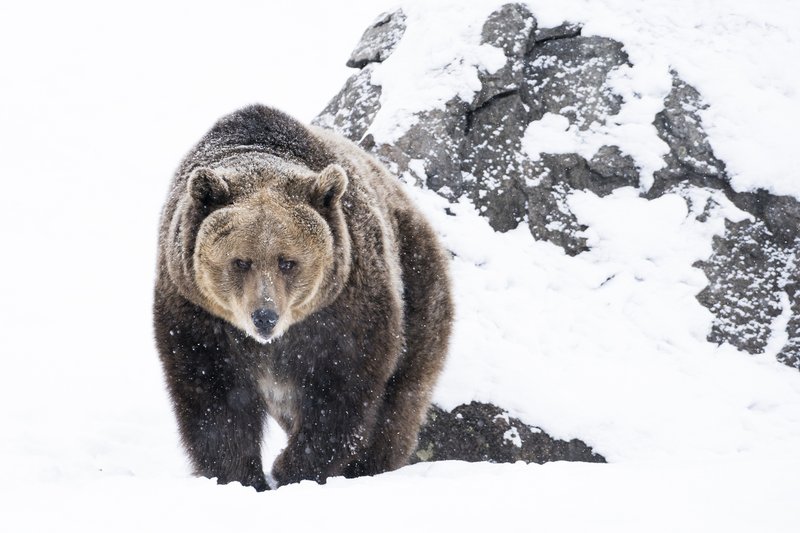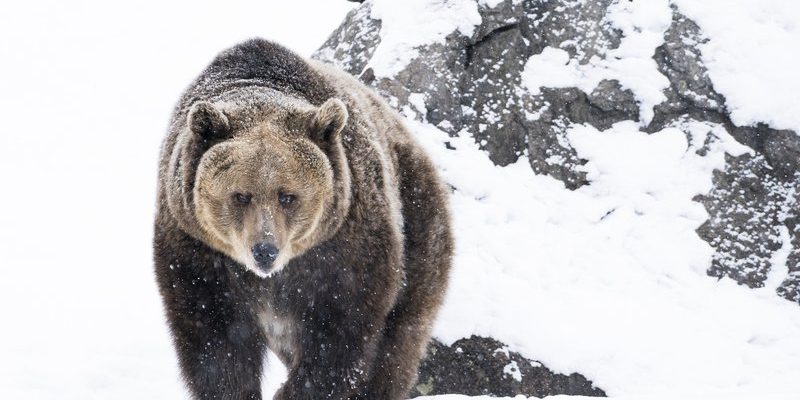
Honestly, the truth about grizzly bears and their interactions with humans is layered. While most encounters may end without incident, there are cases where things can go very wrong. Just like you wouldn’t want to corner a large dog, getting too close or provoking a grizzly can lead to some serious consequences. This brings us to the heart of our discussion: understanding how and why grizzly bears can be dangerous to us.
The Nature of Grizzly Bears
Grizzly bears are not just big and furry; they are powerful animals with unique behaviors. Weighing between 400 to 1,500 pounds, they can run up to 30 miles per hour. That’s faster than most of us can sprint! They thrive in various habitats, including forests, mountains, and even tundras. These bears play a vital role in their ecosystems, helping to control populations of other animals and disperse seeds through their eating habits.
You might find it interesting that grizzly bears are generally solitary creatures. They prefer to roam alone, except during mating season or when a mother is raising her cubs. They’re also known for their powerful sense of smell — it’s about seven times better than a bloodhound’s! This keen sense helps them locate food and can also lead them to human campsites, especially if food is left out or improperly stored.
Why Grizzly Bears May Attack
Now, let’s get to the crux: why do grizzly bears sometimes pose a danger to humans? The key to understanding this lies in their behavior and instincts. When a bear feels threatened, it may see us as a potential danger and react defensively. Here are some key reasons why a grizzly might attack:
- Surprise Encounters: If a bear is startled, it might react instinctively. This is especially common when hikers approach quietly or suddenly surprise a bear.
- Cub Protection: A mother grizzly will fiercely protect her cubs. If you stumble upon a bear family, you might find yourself in a precarious situation.
- Food Aggression: Bears are opportunistic feeders. If they associate humans with food, whether it’s through improper trash disposal or careless camping, they may act aggressively.
Here’s the thing: most bear attacks are not predatory but rather defensive. They usually happen because the bear felt threatened. So, understanding their behavior is key to minimizing risks.
What Happens During an Attack?
Facing a grizzly bear can be terrifying. If you find yourself in such an unfortunate scenario, you might wonder what actually happens during an attack. First off, it’s important to know that grizzlies have different types of attacks, and understanding them can help you respond better.
- Defensive Attacks: These occur when a bear feels threatened. The bear may charge, bluff, or swat at you. It’s typically not an attack with the intent to kill.
- Predatory Attacks: Rare but serious, these happen when a bear sees a human as prey. These encounters are much less common than defensive ones.
In a defensive situation, many experts recommend remaining calm and trying to back away slowly without making direct eye contact. In predatory scenarios, the advice often changes, emphasizing the need to fight back as a last resort. It’s a scary thought, but knowing the difference is crucial.
How to Stay Safe in Bear Country
If you’re planning an adventure in grizzly territory, safety should be your top priority. So, what can you do to minimize your risk? Here are some practical tips:
- Make Noise: Talk, sing, or shout as you hike. Bears typically avoid humans and will move away if they hear you coming.
- Store Food Properly: Use bear-proof containers and hang food at least 10 feet off the ground, away from tree trunks.
- Travel in Groups: Bears are less likely to approach larger groups of people, making it safer to hike with friends.
Remember, being prepared and educated about bear behavior is your best defense. This knowledge can help you enjoy the beauty of nature without unnecessary fear.
Recognizing Bear Signs
Understanding bear signs is crucial when you’re out in the wild. These clues can help you anticipate whether you’re in a bear’s home turf. Here are a few signs to look out for:
- Tracks: Grizzly bear tracks are large, with five toes on each paw. They often look like a big handprint.
- Scat: Bear poop can be an indicator of their presence. It’s usually dark, chunky, and may contain berries or fur.
- Digging: Bears often dig up roots or insects, leaving behind disturbed soil or uprooted plants.
By recognizing these signs, you can adjust your route or take extra precautions when hiking in bear-heavy areas.
What To Do If You Encounter a Grizzly
So, you’ve spotted a grizzly bear. Now what? First, try to remain as calm as possible. Here’s a step-by-step guide on how to handle the situation:
1. Stay Calm: Take a deep breath — panicking won’t help.
2. Identify Yourself: Speak in a calm voice to let the bear know you’re human. Avoid shouting or sudden movements.
3. Back Away Slowly: Don’t turn your back. Move away slowly without running or making abrupt movements.
4. Prepare Your Bear Spray: If the bear approaches, be ready to use bear spray. Aim for the bear’s face and deploy it when it’s within 20-30 feet.
Following these steps can significantly reduce your risk and help you navigate a tense situation.
Grizzly bears are awe-inspiring animals that deserve our respect. While they can be dangerous to humans, understanding their behavior, being prepared, and knowing what to do in various situations can keep you safe. Always remember that these magnificent creatures play a vital role in our ecosystems, and we share the earth with them.
So, the next time you’re out in nature, take a moment to appreciate the wilderness while keeping safety in mind. It’s possible to enjoy the beauty of grizzly bears while also respecting their space. With the right knowledge and precautions, you can safely coexist with one of nature’s most powerful creatures.

